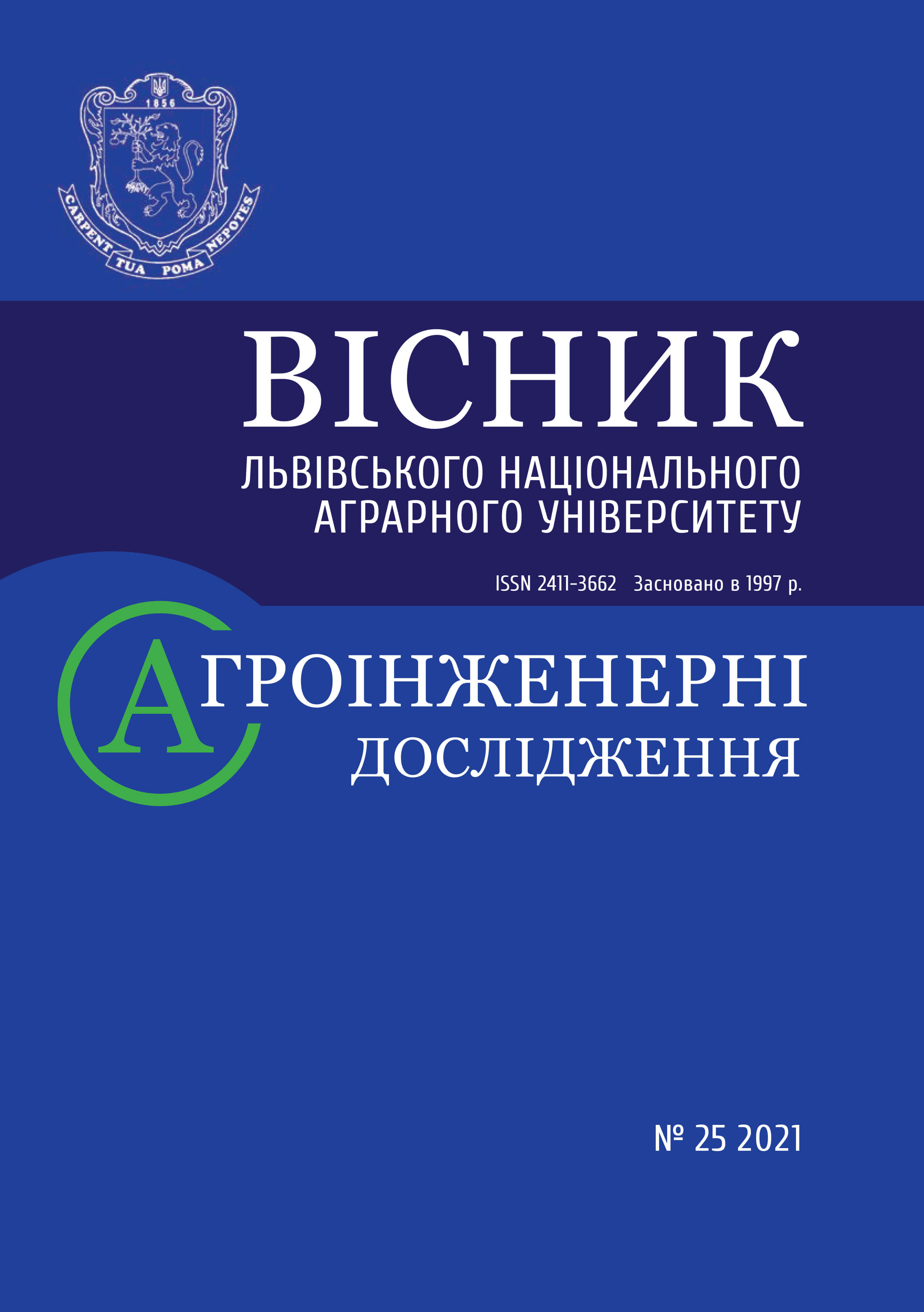Impact of the thickness of the wall of optical lenses on the production process stability
DOI:
https://doi.org/10.31734/agroengineering2021.25.083Keywords:
process stability, optical lense, injection molding, product qualityAbstract
The article compares the stability of the production process of plastic optical lenses produced by the injection molding process. Moreover, it evaluates the effects caused by using very thick walls and very thin walls in plastic optical lenses. The injection process are divided into three fundamental stages. The first is the injection of plastic into the mold itself (filling). During this phase, 95–99% of the cavity volume is filled. The second phase is the so-called after-pressure, where the remaining cavity spaces are filled, and the part reaches dimensional stability. The last stage is called cooling. During the final phase, the element is solidified and becomes dimensionally stable in lower temperatures. In the current work, the authors compare the lenses that differ only in the maximum wall thickness. In the experiments, the conditions of changing pressure and injection speed were simulated. During injection, slight changes in the injection parameters may occur due to the random external influences. Those influences include the change in ambient air temperature, voltage fluctuations in the electrical system, machine vibrations, imperfect homogeneity of the material used, etc. The common process parameters that the organization uses by default were used as a basis. The after-pressure and injection pressure were changed to 102%, 105%, 98%, and 95% in the experiments. The results evaluate the proportion of non-conforming products (scrap) that appertain to each change in the parameters of production.
The research proves the dependence between the thickness of the lens wall and the stability of the process. Although a higher total waste is expected for thick-walled lenses, the knowledge of the stability of the process in the production of lenses has not yet been recorded though it is a significant indicator for the production planning. It is known that a lower process stability is expected based on the design for these types of elements, and the researrchers were able to take measures to eliminate this risk and thus reduce the total waste and other negative impacts on production.
Modifications to the mold can also achieve some improvement in this condition. The first step is to expand the cross-section of the inlet channel gate. The pressure is transmitted to the cavity through this cross-section. Its enlargement ensures a more even distribution of the pressure in the entire volume of the part. Another way to facilitate production is to guarantee optimal cooling of the cavity. It can be achieved by placing the cavity away from the hot runner system so that the cooling can be evenly distributed around each side of the part. The last way to solve the problem of collapse is to create a counter-deformation in the mold. That is to enlarge the cavity so that the lens sinks into the desired shape.
These measures may include preventive debugging of the mold for multiple presses in case the press needs to be changed and preferably placing such elements on newer injection molding machines where parameters are less likely to fluctuate and avoiding moving such molds to presses for which they have not been debugged unless necessary. The work aims to prove the dependence between the thickness of the optical lens and the stability of the injection process. While waste percentage, cycle time, and other parameters are considered and quantified at the design stage of the optical lens, process stability has not yet been quantified. Proving the dependence between the above-mentioned phenomena will allow predicting the process stability of new lens designs more precisely.
References
Aure-Lighting. 2021. LED Lenses. URL: https://www.auer-lighting.com/en/products/lenses/led-lense (Accessed 14 March 2021).
Autodesk. 2016. Missing the Mark: How to avoid or camouflage marks in injection-molded parts. Resource Center. URL: https://damassets.autodesk.net/content/dam/autodesk/www/mech-eng-ressource-center/cae-analyst/assets/fy17-mold-engineer-sink-marks-report-en.pdf (Accessed 15 March 2021).
Bozzelli J. Why Multi-Cavity Molds Fill Unevenly. URL: https://www.ptonline.com/articles/why-multi-cavity-molds-fill-unevenly (Accessed 09 May 2021).
Ecomolding. 2019. What causes scratches in injection molding products. URL: https://www.ecomolding.com /scratches/ (Accessed 09 May 2021).
Merriam-Webster. 2021. Injection moulding. URL: https://www.merriam-webster.com/dictionary/ injection%20molding (Accessed 27 February 2021).
ONEX Machinery. 2021. What Are the Important Parameters of the Injection Moulding Process? URL: https://onexlimited.com/%e2%85%b0-what-are-the-important-parameters-of-the-injection-molding-process/ (Accessed 17 March 2021).
Pačaiová H., Andrejiová M., Balažiková M. et al. Methodology for Complex Efficiency Evaluation of Machinery Safety Measures in a Production Organization. Appl. Sci. 2021. 11. P. 453. doi: 10.3390/app11010453.
Pačaiová H., Ižaríková G. Base Principles and Practices for Implementation of Total Productive Maintenance in Automotive Industry. Quality Innovation Prosperity. 2019. 23 (1). P. 45–59. doi: 10.12776/qip.v23i1.1203.
Plainis S., Murray I. J., Pallikaris I. G. Road traffic casualties: understanding the night-time death toll. Injury prevention: Journal of the International Society for Child and Adolescent. 2006. Vol. 12(2). P. 125-128. URL: https://www.ncbi.nlm.nih.gov/pmc/articles/PMC2564438/ (Accessed 14 March 2021).
Plasty G. Konštrukcia a výroba šošoviek pre LED svetlomety z plastu namiesot skla. URL: https://www.plasticportal.sk/sk/konstrukcia-a-vyroba-sosoviek-pre-led-svetlomety-z-plastu-namiesto-skla.html/c/6647/ (Accessed 09 May 2021).
Resinex. 2021. Mould Parts Function. URL: https://www.sinomould.com/Mould-part-function.html (Accessed 15 September 2021).
Resinex. 2021. PMMA Altuglas. URL: https://www.resinex.cz/produkty/altuglas.html (Accessed 29 April 2021).
Rosato Dominick V., Rosato Donald V., Rosato Matthew V. Plastic Product Material and Process Selection Handbook. doi: 10.1016/B978-1-85617-431-2.X5000-2.
Silver Optics. 2020. About us. URL: http://www.opticslenschina.com/ (Accessed 15 September 2021).
Simcon. 2020. Project OptiSys: Plastic instead of glass – we collaborated with partners including KraussMaffei, Hella and Fraunhofer, to create new multi-layered lenses for LED headlights. URL: https://www.simcon.com/project-optisys-plastic-instead-of-glass (Accessed 05 September 2021).
Xie Lei, Shen Longjiang, Jiang Bingyan. Modelling and Simulation for Micro Injection Molding Process. doi: 10.5772/16283.
Yadav A. Subject study of operation and maintenance of all electric injection moulding machine. URL: https://www.slideshare.net/anymona1991/seminar-on-all-electrical-injection-moulding-machine-main (Accessed 17 March 2021).


